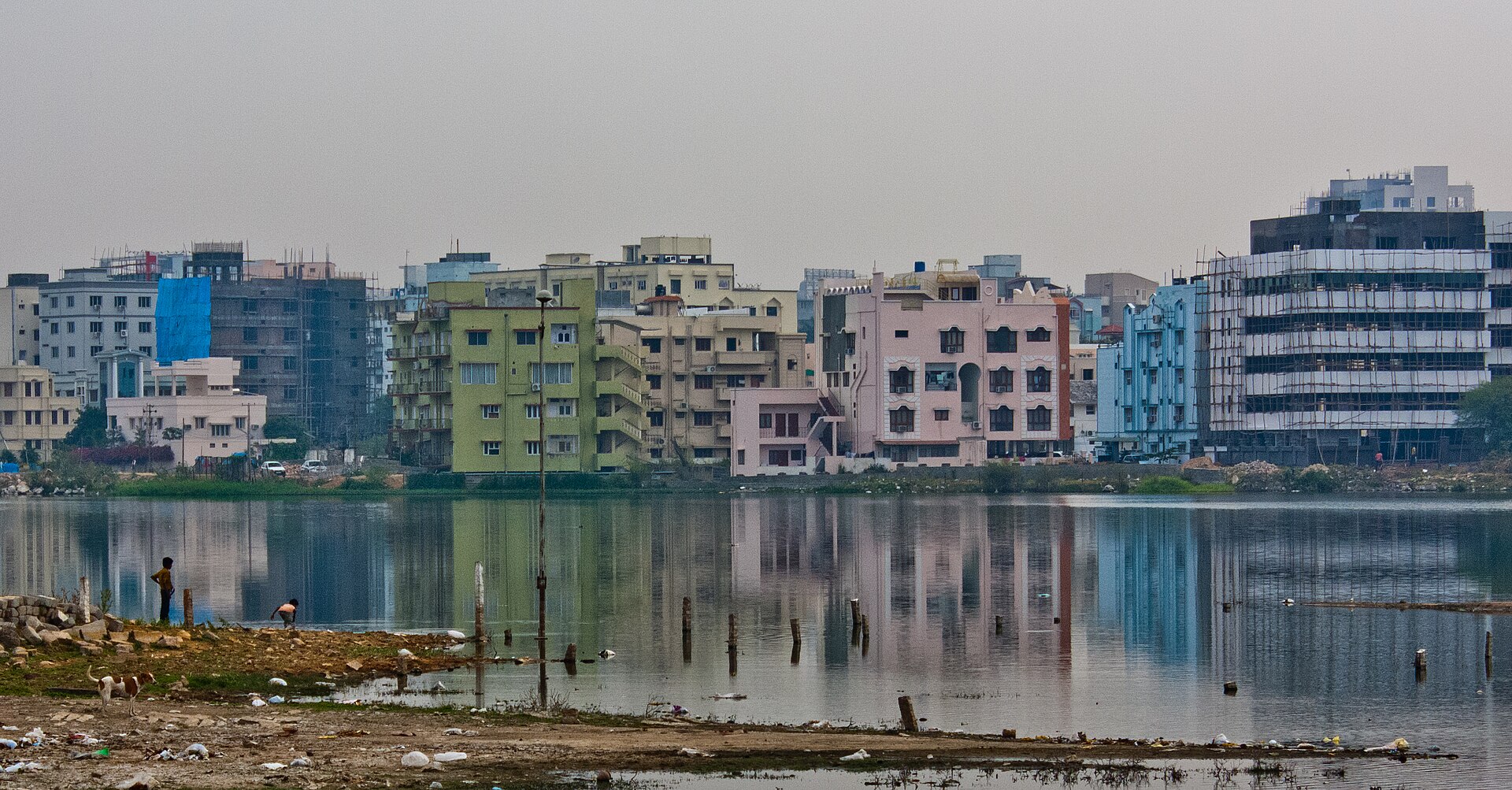As Hyderabad was known for interconnected lakes in the past, the effort is to ensure that they are reclaimed to ensure a free flow of water from one water body to another through interconnecting nullahs or watercourses.
Published Oct 09, 2024 | 10:05 AM ⚊ Updated Oct 09, 2024 | 10:05 AM

A report released by Deputy Chief Minister Mallu Bhatti Vikramarka said 491 out of 920 Hyderabad lakes and tanks have been encroached. Pictured, Durgam Cheruvu near Hitec City. (Nitin Jadon/Wikimedia Commons)
A day after Telangana’s Deputy Chief Minister Mallu Bhatti Vikramarka released a report on encroached lakes in Hyderabad, HYDRAA Commissioner AV Ranganath conferred with the Survey of India officials on Tuesday, 8 October, to finalise buffer zones and full tank levels (FTL) of the water bodies.
The Hyderabad Disaster Response and Assets Protection Agency (HYDRAA) chief was closeted with BC Parida, Director, AP and Telangana Geospatial Directorate, Survey of India, to identify tanks and lakes that had either disappeared or shrunk. The meeting sought to develop an action plan to restore them.
HYDRAA sources said Ranganath sought information from the Survey of India on the remaining lakes in Hyderabad. As Hyderabad was known for interconnected lakes in the past, the effort is to ensure that they are reclaimed to ensure a free flow of water from one water body to another through interconnecting nullahs or watercourses.
The commissioner pored over the Survey of India’s maps on lakes. The maps pointed out the extent of encroachments in reference to their state in the 1971-72 survey. The commissioner discussed the present status of lakes and nullahs. He also discussed their water carrying capacity as of 1971-72 and now.
The Survey of India officials made a PowerPoint presentation to Ranganath, comparing maps of lakes and nullahs in 1971-72 and those now present. Ranganath compared the data on lakes furnished to him by the GHMC, and the Irrigation Department to arrive at the actual and realistic picture of the status of lakes that existed previously.
The HYDRAA commissioner reportedly sought the Survey of India’s cooperation to decide the FTL and buffer zones of lakes in Hyderabad, Rangareddy, Medchal-Malkajgiri, and Sangareddy. These details would be used to prepare a comprehensive report on the status of the lakes and nullahs.
At the lake protection committee meeting convened by Ranganath on Monday, 7 October, it was decided to prevent encroachment of the lakes with the help of an app. People who come to know of any encroachment could alert HYDRAA over the app. It would facilitate instant action to protect the water bodies.
The meeting also decided to keep a close watch on the tanks, lakes, government lands, parks, and the areas that have been marked for public purposes. The committee also decided to remove the debris immediately after a structure was pulled down. To begin with, the removal of debris will begin in Sunnam, Appa, Erra Kunta, and Kukatpally lakes.
Vikramarka, later on Monday, released a report on lakes encroached over the past 20 years. The report pointed out that 491 out of 920 Hyderabad lakes and tanks have been encroached.
Vikramarka said as Hyderabad was known for its rocks, parks, and lakes, it should be restored to its past glory.
The report was based on the data provided by the Telangana Remote Sensing Applications Centre (TGRAC). It provided the status of lakes before and after 2014.
Vikramarka said that as of 2014, there were 417 water bodies within GHMC limits, of which 182 were fully encroached. By 2023, this number rose to 193 full encroachments.
Meanwhile, between GHMC and the Outer Ring Road, the situation has similarly deteriorated, with fully encroached water bodies increasing from 62 to 89 over the same period.
(Edited by Majnu Babu).
